Intro to IPR, Part 1—Economic Incentive Theory
In this introduction, we will discuss the areas covered by the topic with a focus on establishing a basic economic framework to evaluate IP policy going forward.
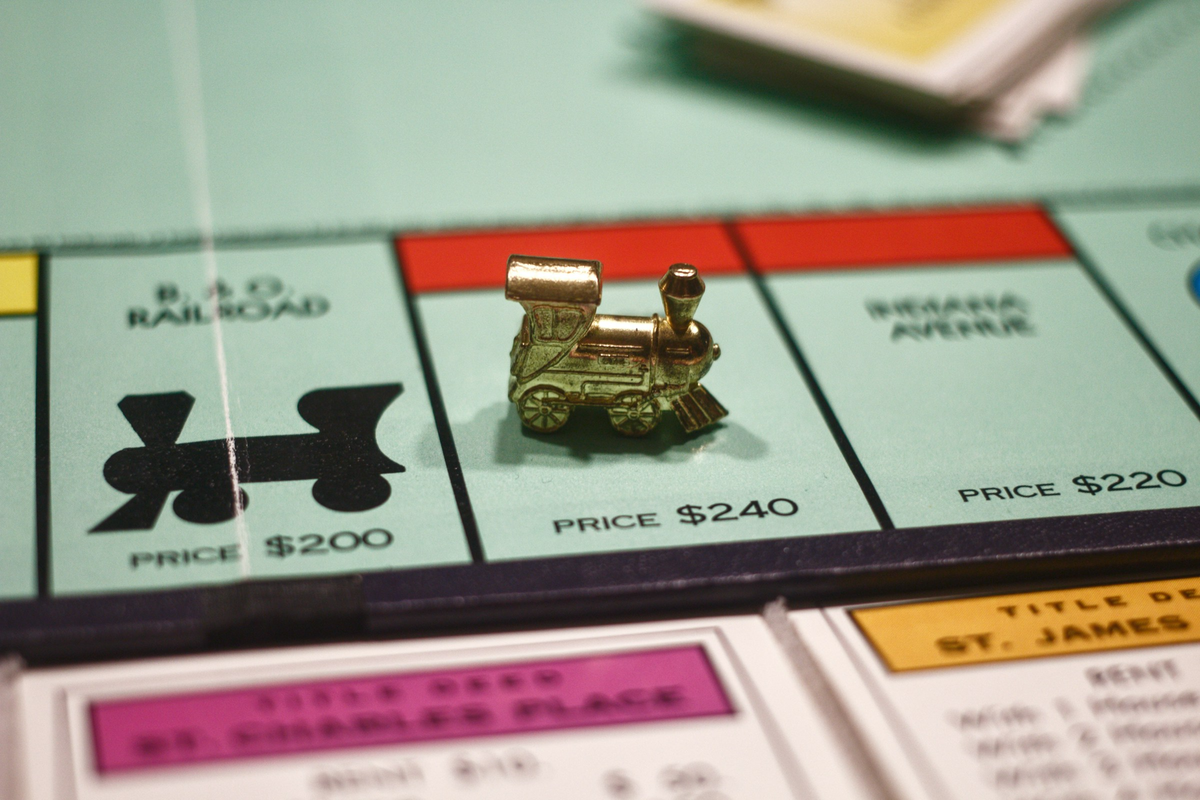
Introduction
There are two mainstream ways of thinking about intellectual property rights (IPR). Legal scholars tend to approach the area by splitting it into its component parts, distinguishing sharply between patent, copyright, trademark, trade secrets, and sui generis schemes like the Database Right in the European Union. The legal approach is complex and messy, but does capture some elements of the IP landscape that will be crucial for debaters competing for top spots at national tournaments.
The economic approach, while very deep, is conceptually much simpler. Rather than differentiating between forms of IPR at the outset, this approach focuses on the set of policy levers that the disparate areas share. This approach allows us to think about the topic through the lens of a manageable set of argument genres—different impacts and uniqueness arguments are tied together by a set of canonical argument ‘themes’ justifying each of the topic’s ‘traditional’ IPR areas.
If you’re a high school debater, no matter how abundant your coaching resources, your experience of the year to come will be characterized to some degree by resource constraints. Although we may not yet know exactly how this will happen, the most competitive teams this year will be able to generate a significant amount of apparent argument diversity. As these innovations trickle down to the rest of the circuit, the range of cases you encounter is likely to expand, rather than shrink. Depending on your resources and ambitions, you will be able to mitigate this complexity to some degree by writing specific negative strategies. This approach will likely become increasingly difficult as the year progresses, especially if you are thinking about each affirmative as a standalone artifact rather than a variation on a broader set of common ideas.
Identifying, articulating, and structuring preparation around these common threads will be a key differentiator between those whose negative arsenals manage to keep up with the field, and those whose arguments lag behind. This is no easy task, as it requires a deep understanding and ability to draw connections between various areas of intellectual property law. In these series, I hope to equip you with the building blocks you need to work through this complexity. Note that I will be describing the justifications for IPR on their own terms—as the negative team, you should, of course, call these arguments into question!
In the first installment of our series, we will give a very brief description of the areas covered by the topic, but focus primarily on setting a basic economic framework and terms, so that we can use them to evaluate specific changes to IPR going forward.
The Core Philosophy: Balancing Individual Reward and Social Benefit
At the heart of the IPR debate lies a fundamental tension between two competing interests: the need to incentivize individual innovation and the desire to promote the overall progress of society. This core philosophy is enshrined in the U.S. Constitution, which grants Congress the power ‘To promote the Progress of Science and useful Arts, by securing for limited Times to Authors and Inventors the exclusive Right to their respective Writings and Discoveries’ (Article I, Section 8, Clause 8).
The Founding Fathers recognized that granting temporary monopolies to creators and inventors would encourage them to invest their time, energy, and resources into developing new ideas and technologies. By providing a period of exclusivity, during which the creator can reap the rewards of their efforts, the IPR system aims to foster a culture of innovation and creativity.
However, the Constitution also emphasizes that these exclusive rights should be granted only ‘for limited Times.’ This temporal limitation reflects the understanding that, while individual reward is important, the ultimate goal is to benefit society as a whole. Once the exclusive rights expire, the innovations and creations enter the public domain, allowing others to build upon and improve them, thus furthering the collective progress of humanity. Moreover, eligibility for protection is conditioned on the inventor revealing the essential ingredients of their invention (in the case of patent) or publishing their ideas (in the case of copyright). This provides a further mechanism for creative activity to contribute to the state of the art in society as a whole.
To see why there is a trade-off between the inventor and society at large, let’s take a deeper look at one theme that cuts across all categories of intellectual property law, serving as a unifying utilitarian justification for the entire endeavor: the economic incentive theory of innovation.
Economic Incentives and IPR
Below, you can see a graph that should be familiar if you’ve ever taken an economics class, representing the relationship between the demand and supply for a good or service. Supply and demand are represented by curves, rather than points, because both supply and demand vary with respect to price.
Imagine a market (a collection of buyers and sellers) for a hypothetical good. Some quantity of this good would be purchased at any given price. If the price is too high, suppliers will be left with unsold stock; if the price is too low, suppliers will be unable to fulfill all of the product demanded (this is the variance I mentioned earlier). Either way, poor pricing leaves money on the table.
As a result, suppliers are encouraged by the market to discover an 'equilibrium' price at which the quantity demanded and supplied balance out, and the market 'clears'. On the graph below, the equilibrium price and quantity are represented by P1 and Q1 respectively, given by the intersection of supply and demand in our graph.

We can use the supply and demand graph to figure out what happens when demand or supply shift. Let’s imagine that someone invents a new technology which can supply the good much more efficiently than before. Armed with their new invention, more suppliers are willing to sell the good at any given price. We can represent this by shifting the supply curve to the right, revealing a new equilibrium price (lower than before) and a new equilibrium quantity (higher than before).
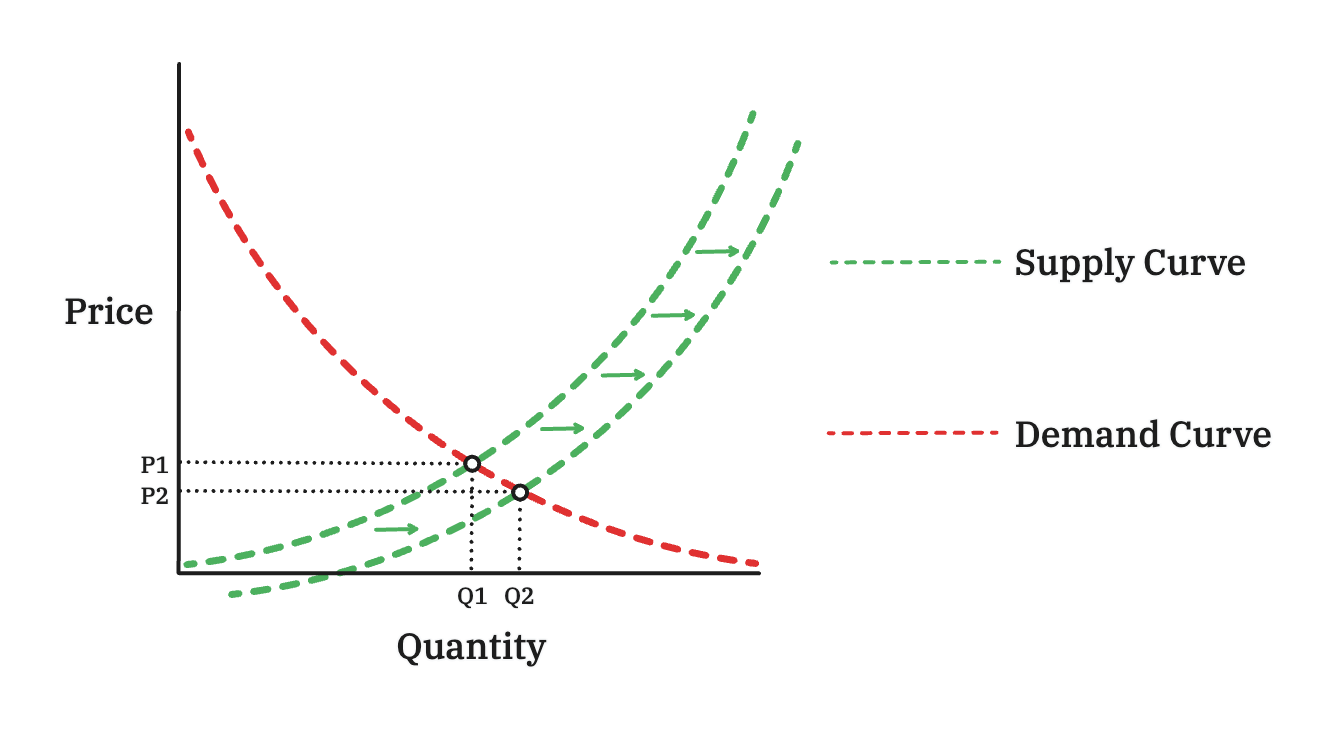
What does all of this have to do with IPR? The supply and demand graph tells us a very limited story, since it is a very abstract representation of how markets actually work.
We need some more detail, along with two new concepts: willingness to pay (WTP), and willingness to accept (WTA). A buyer’s WTP represents the maximum amount they are willing to spend to obtain a good or service; a seller’s WTA represents the minimum amount they are willing to charge for that good or service. Each individual buyer and seller has their own WTP and WTA. These thresholds are based on the utility—or benefit—that buyers and sellers expect to receive from the transaction.
If a buyer expects to receive $20 of utility from a good which they can obtain for $15, purchasing the good increases their utility—they get $20 of utility for just $15, and have an extra $5 left over! This difference between WTP and the actual price paid in a transaction is called consumer surplus. The flip-side—the difference between WTA and the actual price paid—is called producer surplus. You can think of producer and consumer surplus as measuring how much a trade ‘benefits’ producers and consumers, respectively.
This description seems at odds with our supply and demand graphs. Why would any supplier charge a consumer less than they are willing to pay? For that matter, why would any consumer pay more than the supplier is willing to accept? The answer is that there is competition between suppliers, and competition between buyers. To explore this, let’s imagine a market with three suppliers—represented by A, B, and C—and nine consumers—represented by the numbers 1 through 9.
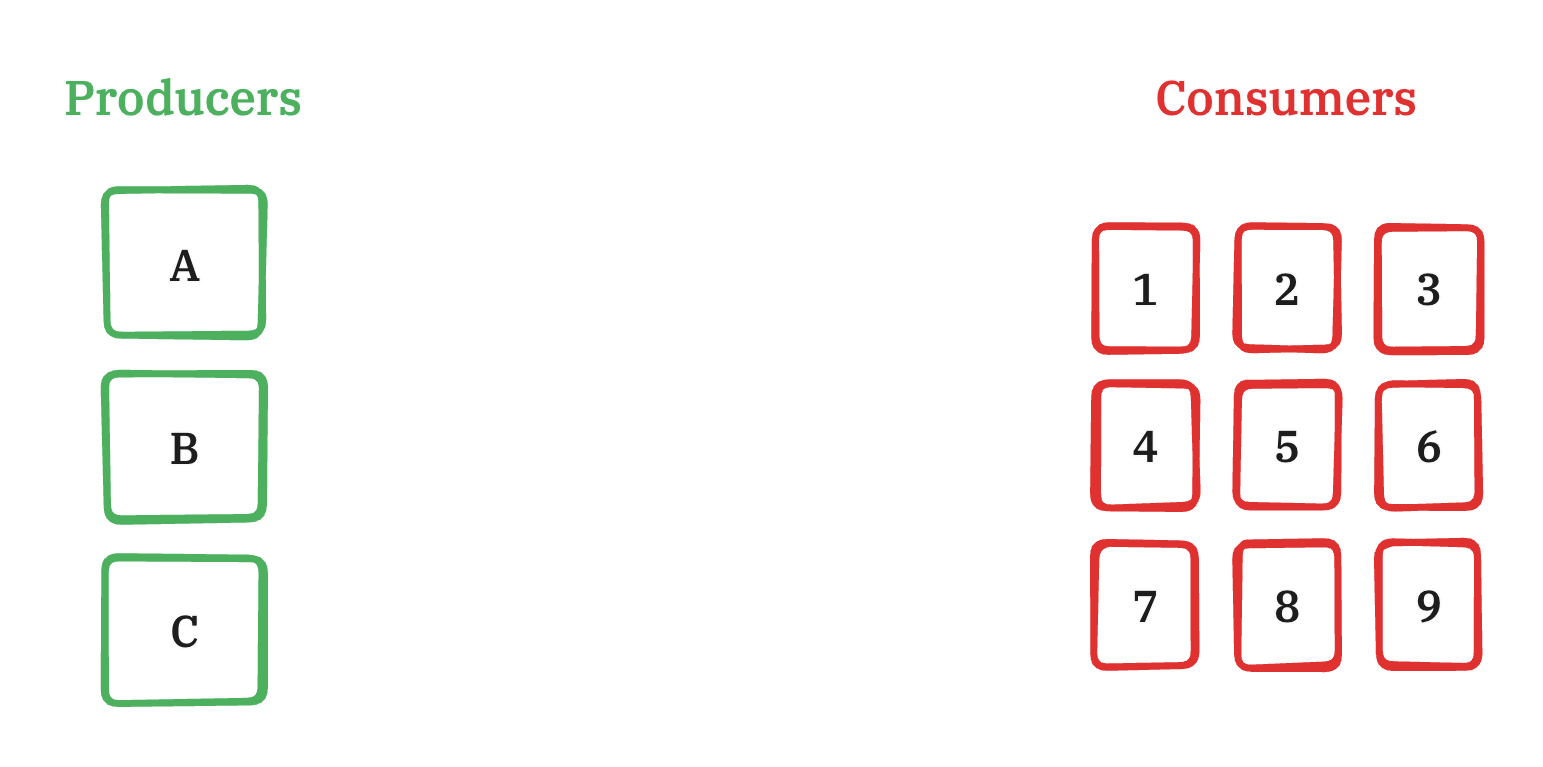
Let’s assign each of our producers and consumers a WTP or WTA. Let’s also suppose that each of our producers has some quantity of goods that they wish to sell, and that each of our consumers is looking to purchase one unit of the goods in question.
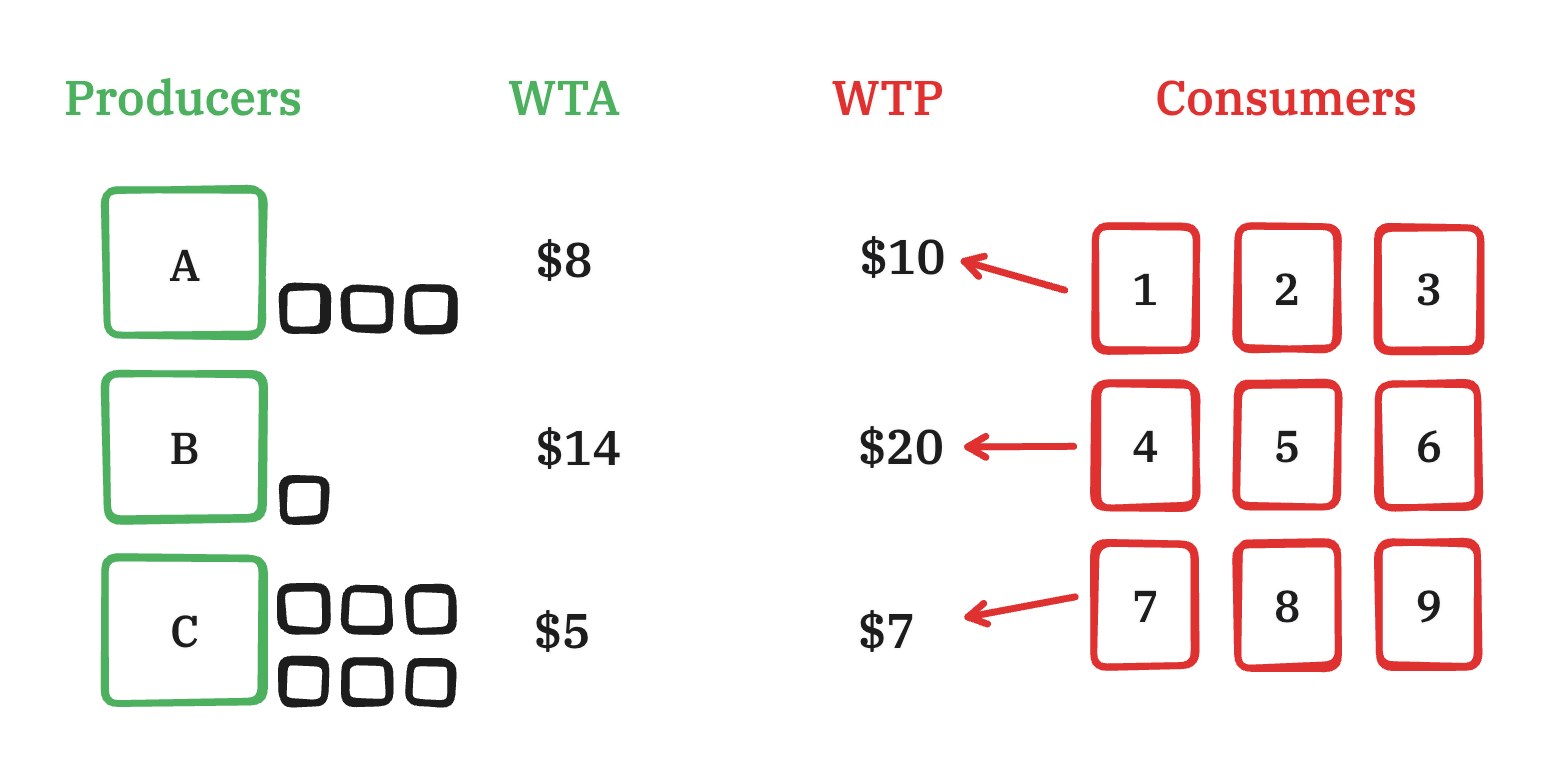
Which producers will be able to sell their goods? You can probably guess, but it’s worth following the money to get an understanding of the mechanics of our market.
Consumers 7, 8, and 9 are cheap—they won’t pay more than $7 for a unit of goods. Fortunately for them, Producer C is happy to sell for $7. Though there is no consumer surplus (our buyers paid exactly what they were willing to pay), these transactions created a producer surplus of $6—$2 per unit of goods sold at $7 instead of $5.
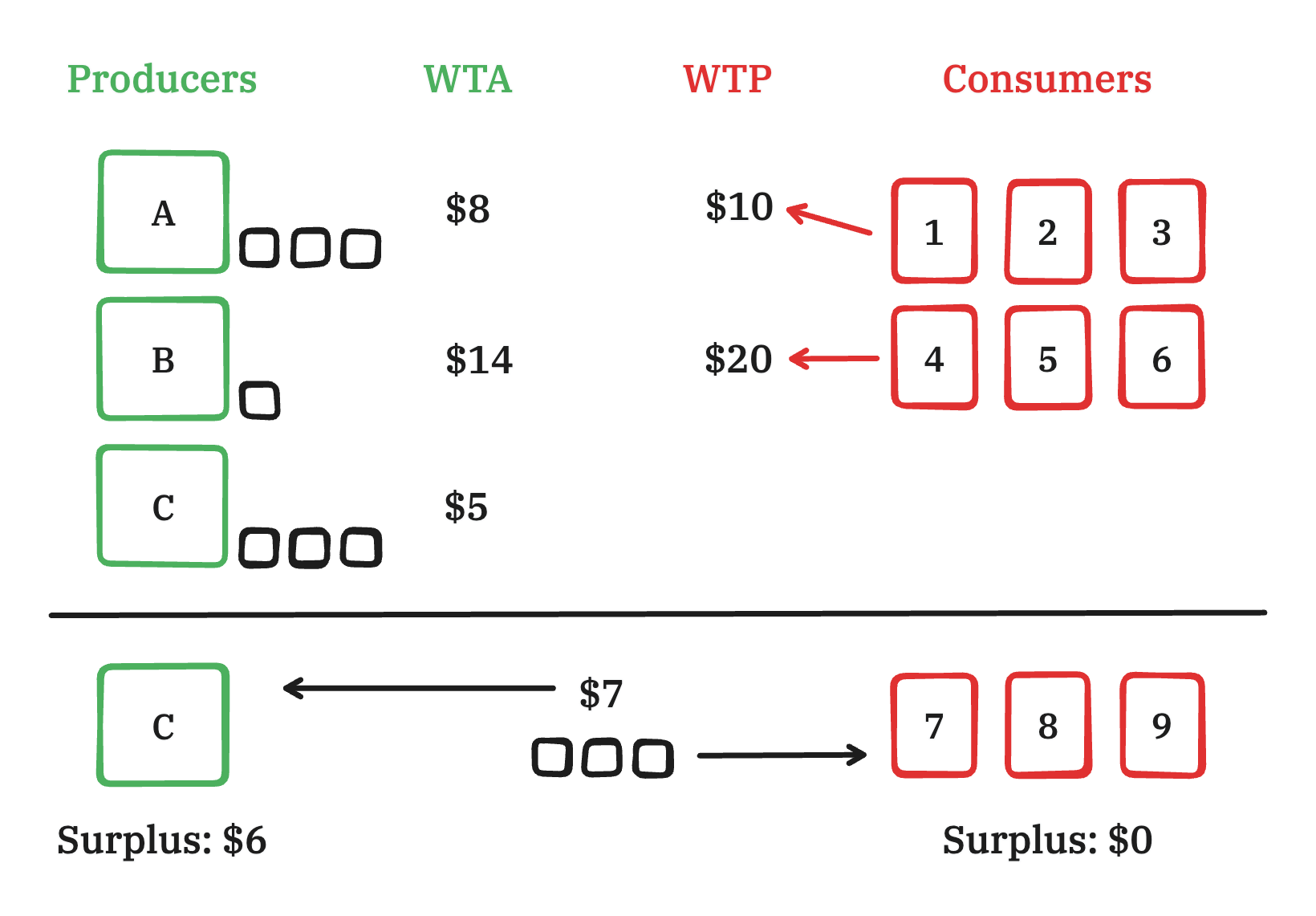
Consumers 1, 2, and 3 are also happy to buy Producer C’s goods for $7. Although they’d have gone to Producer A if they had no other option, Producer C can provide the same product at a better price. In addition to a producer surplus, these transactions result in a consumer surplus of $9—$3 per unit of goods purchased at $7 instead of $10.
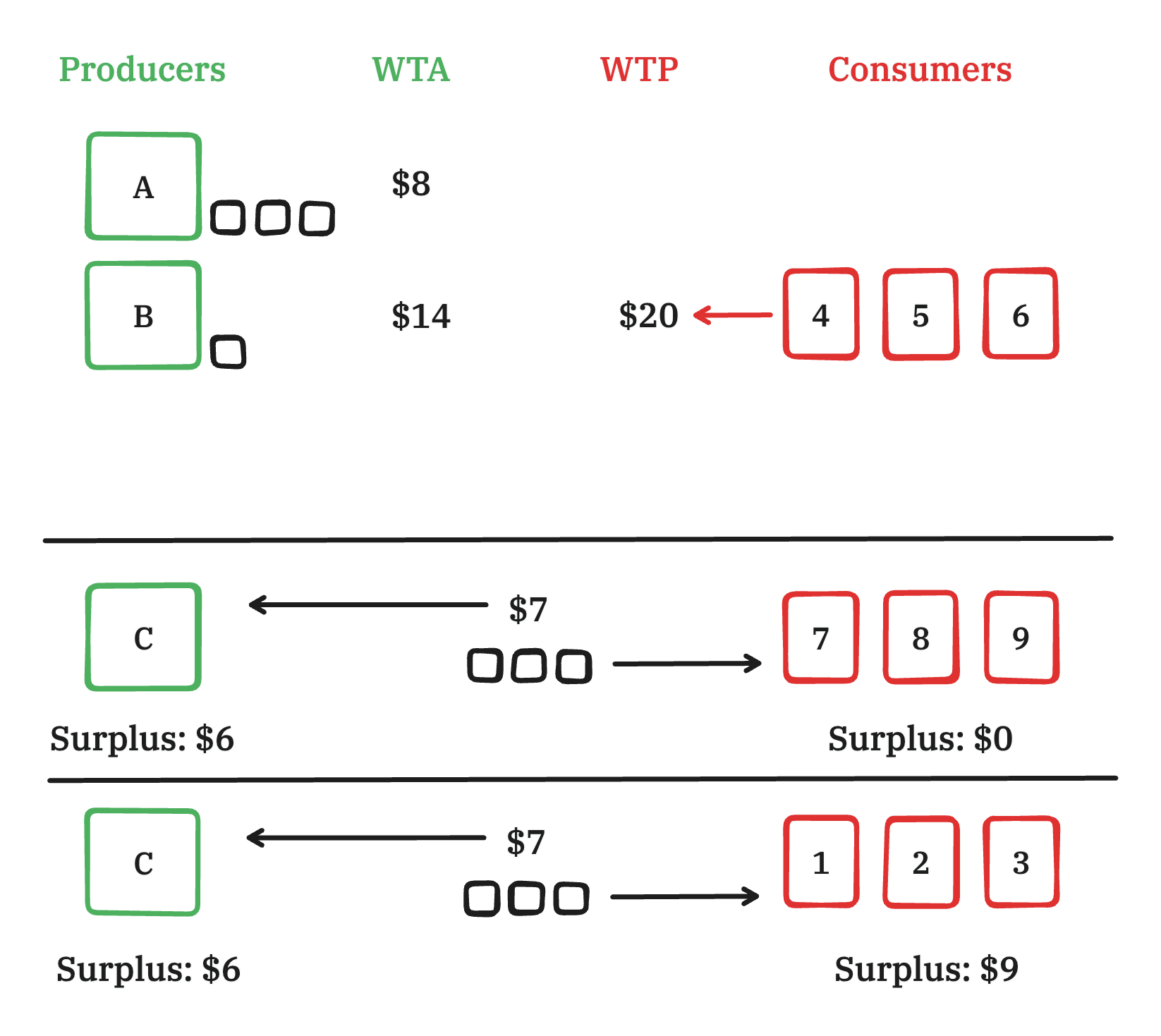
So far, so good. What about our bougie consumers? Producer A would be happy to sell for $8. However, Producer A would also prefer to make as much money off of their sale as they conceivably can. Since Producer B can’t sell for less than $14, Producer A can hike their price to $13, secure in the knowledge that they are still undercutting their competition. This leaves us with our final set of transactions, and leaves Producer B holding the bag.
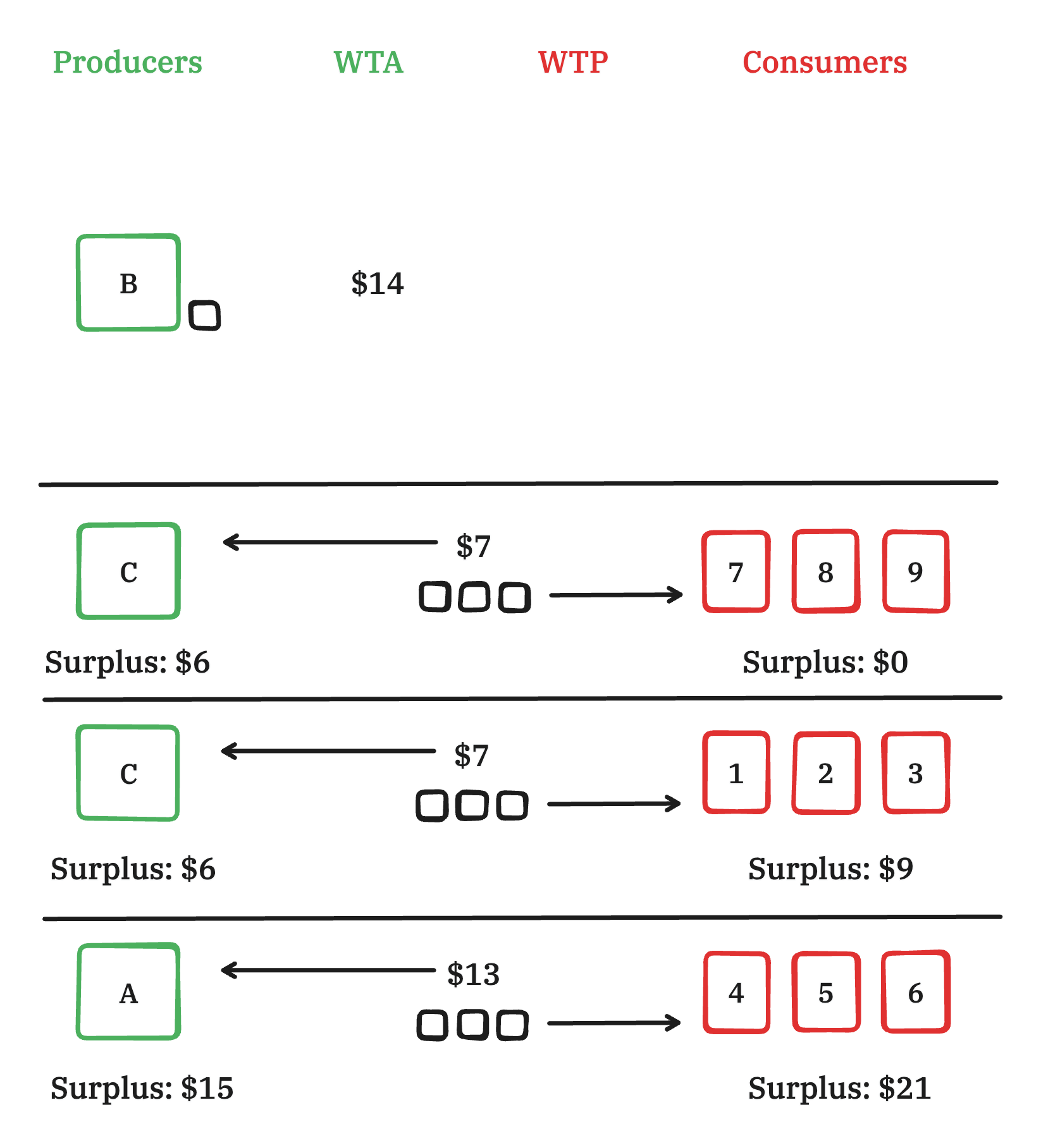
Now, let’s consider the same market—but this time, Producer A has managed to secure some kind of intellectual property right in the production of this kind of good. Producers B and C can no longer compete within our imaginary market.
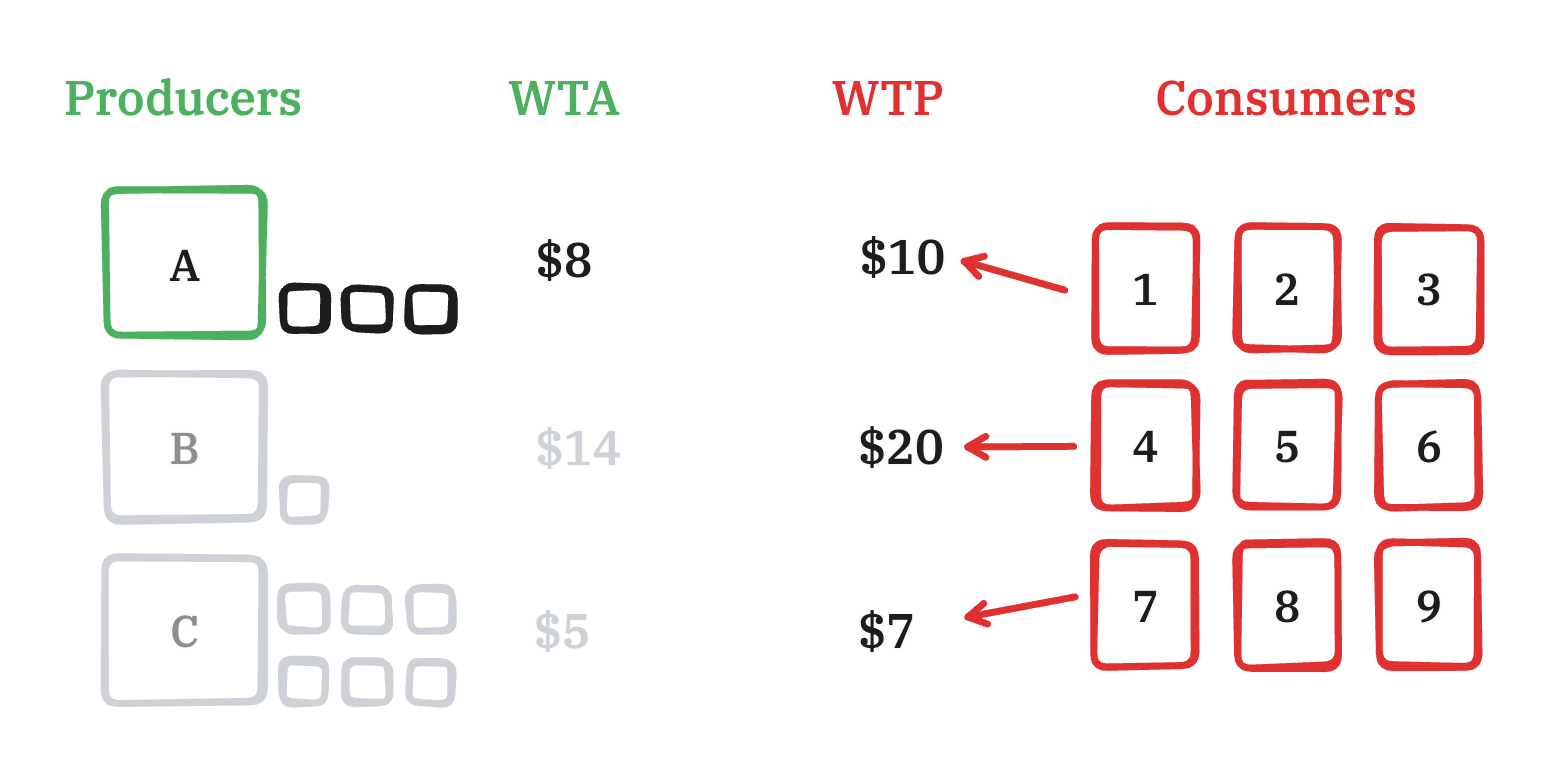
What happens to the price of the good? Left without competition, Producer A is left to sell their goods at the price being offered by the highest bidders: Consumers 4, 5, and 6, each willing to pay $20. After all, no one else can come in to undercut them!

Immediately, we can see why this is such a good deal for Producer A. Look at all that producer surplus! If Producer A would have been happy to sell at $8, they must be ecstatic to sell at $20. In fact, in our example, Producer A was able to obtain a greater surplus than all producers in the competitive version of our market—combined.
But if we take a step back, we can also see that what’s good for the goose isn’t always good for the gander. Where our first set of transactions produced $27 of producer surplus and $30 of consumer surplus—a total of $57!—our restricted market produced just $36. To make matters even worse, this market resulted in an undersupply—two thirds of our willing buyers were unable to find a seller at all!
In macroeconomic terms, we would represent the effect of this artificially constrained supply by shifting the supply curve to the left. As we observed, you can see that our idealized model predicts that the effect of such a change in supply would be to significantly increase the equilibrium price and decrease the equilibrium quantity.
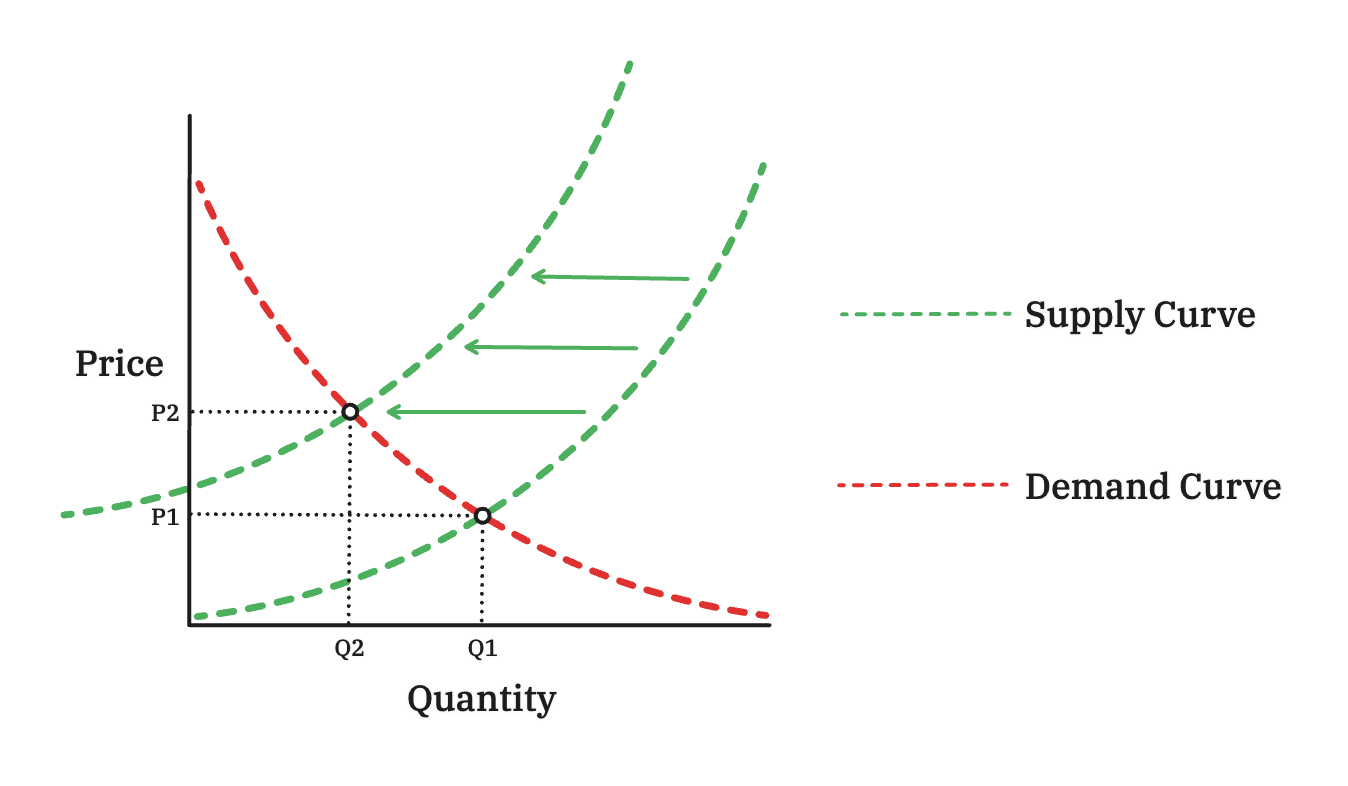
This kind of market, in which only one producer is able to supply goods or services and is therefore able to charge consumers the maximum amount they are willing to pay without worrying about competitors, is called a monopoly—and the power this monopoly exercises over the market price is called market power.
Ordinarily, the U.S. uses a set of tools known as antitrust laws to ensure that markets remain competitive and that no producer is able to distort the market and charge an excessive, or supracompetitive, price. But the premise of intellectual property law is that sometimes, the risk and cost incurred by innovators and creators is deserving of compensation. Proponents of stronger intellectual property rights are willing to award monopoly rights over an invention or publication to its creator for a limited time, redistributing wealth that would otherwise end up as consumer surplus as a reward for inventive activity. In theory, this strikes a good balance. Willing buyers pay innovators and creators for their work—even if they are overpaying relative to the prices that would have emerged in a competitive market.
We'll return to these arguments about innovation, economic welfare, and incentives many times over the course of the season. For now, let’s get a general sense of how arguments about economic incentives map onto the topic, and identify the remaining 'themes' of justifications that will likely be invoked for each of the topic’s areas.
Patents: Protecting the Fruits of Innovation
The patent system is designed to protect novel, non-obvious, and useful inventions. Let’s unpack these terms:
- Novelty. To be eligible for a patent, an invention must be new and not already known or used by others in the U.S., or patented or described in a printed publication anywhere in the world, before the applicant’s invention date. If an invention is already in use, it is ineligible.
- Non-obviousness. A patentable invention must not be obvious to a person having ordinary skill in the area of technology related to the invention. This standard helps to weed out inventions which, while ‘new’ in the sense that they are not currently being used, are an obvious extrapolation from technologies that already exist. Courts administer this test by imagining a hypothetical expert—a ‘person having ordinary skill in the art,’ frequently abbreviated as a ‘PHOSITA’.
- Utility. The invention must have a use. It must have been reduced to practice—in other words, it cannot be a mere idea, but must have a specific application.
Why do we have patents? There are several common arguments.
The first argument is rooted in an economic incentive theory of innovation. As we’ve just learned, awarding an inventor a monopoly in their invention allows them to earn a return on their risky investment that drastically exceeds what they would have been able to charge in the presence of competition. According to the incentive theory, innovators will be more likely to invest in research and development if they can be assured of recouping their investments through exclusive rights. This argument is frequently made with respect to pharmaceutical patents, as you can see in this example:
Bringing forth successful new drugs is risky and costly, as explained in a 2021 Congressional Budget Office (CBO) study. Only about 12 percent of drugs entering U.S. clinical trials secure Food and Drug Administration (FDA) approval. Meanwhile, average research and development costs per new drug range from roughly $1 billion to $2 billion, according to the CBO. Drug companies must rely on profits from the small portion of successful drugs to cover their huge outlays. Strong patents are key to this strategy.
Another argument focuses on attribution. Attribution is another aspect of incentive theory, emphasizing the need to socially validate and recognize the inventor's role in creating a new idea. This recognition goes beyond mere monetary reward, providing a sense of pride and accomplishment for the inventor.
One of the key debates in patent law revolves around a distinction between disruptive and incremental innovation. Disruptive innovation, such as the invention of the personal computer, fundamentally changes an industry or creates a new market. In contrast, incremental innovation involves making small improvements to existing technologies. This kind of innovation is often described as ‘building a better mousetrap’—such innovation can be useful, but it is so connected to existing ideas that it would not be possible to commercialize without infringement. Thus, granting limited-time monopolies arguably encourages inventors to compete by disruptive innovation—bringing fundamentally new ideas to market—instead of incremental innovations.
Of course, some authors take the opposite side of this argument:
As Merges and Nelson highlights: ‘…every potential inventor is also a potential infringer. Thus a strengthening of property rights will not always increase incentives to invent; it may do so for some pioneers, but it will also greatly increase an improver’s chances of becoming enmeshed in litigation’. 147 Whilst the widening of the IP rights has clearly strengthened the rights of the initial innovator, follow-on or cumulative innovation is being hindered and this causes a negative effect upon the overall economic welfare goal.
On the other hand, the patent system promotes the public disclosure of inventions. In exchange for exclusive rights, inventors must provide a detailed description of their invention, enabling others to learn from and build upon their work once the patent expires. This arguably benefits incremental innovations.
Copyrights: Protecting the Expression of Ideas
Copyrights protect the unique expression of an idea, rather than the idea itself. This distinction between idea and expression is vital to copyright law. Facts, character names, individual turns of literary phase are all ideas, not publications. It is their assembly into a holistic work that is treated as deserving of copyright protection.
This branch of IPR has expanded significantly from its historical roots in regulating the reproduction of printed matter. Today, copyrights cover a wide range of creative works, including literature, music, art, film, and even software. Unlike patents, copyrights are created automatically when a creator expresses themselves—they do not need to be registered.
The incentive theory is a central justification for copyright protection. It suggests that creators are more likely to produce original works if they know their expressions will be protected from unauthorized reproduction or distribution. This theory is exemplified by the music industry, where artists rely on copyright to ensure they are compensated for their creative efforts.
In addition to economic incentives, copyrights also protect the moral rights of creators. These rights include the right to be credited for their work (attribution) and the right to maintain the integrity of their creations (integrity). For example, a painter may object to the unauthorized modification of their artwork, even if they have sold the physical painting itself.
However, copyright law recognizes the importance of balancing the interests of creators with the needs of society. The doctrine of fair use allows for limited use of copyrighted material without permission for purposes such as criticism, commentary, news reporting, teaching, scholarship, or research. This provision strives to ensure that copyright does not unduly restrict the free exchange of ideas and information.
Trademarks: Protecting Brand Identity and Consumer Trust
Trademarks—literally, the protection of 'marks' used in 'trade'—serve a distinct purpose within the IPR framework. They protect the symbols, names, or other distinguishing features that identify the source of a product or service. By preventing others from using similar marks, trademarks help consumers avoid confusion and make informed purchasing decisions.
The primary justification for trademark is consumer protection. Trademarks ensure that consumers can trust the quality and authenticity of the products they purchase. For example, when a consumer sees the iconic Apple logo on a product, they can be confident that it is a genuine Apple product with the associated quality and features.
Trademarks also enable businesses to build and maintain a strong brand identity. By investing in the quality and reputation of their products, companies can foster consumer loyalty and command premium prices. The case of Coca-Cola's distinctive script logo and the brand's global recognition demonstrate the power of trademarks in creating valuable business assets.
A Note on International Harmonization
It is worth noting that in addition to the specific justifications for particular kinds of protection, many countries make policy choices based on the need to comply with international treaties or synchronize their IPR policies with those of other countries. The aim of such harmonization is to facilitate international trade and provide familiarity for foreign investors. Proponents of strong intellectual property rights have successfully pushed for states to adopt a variety of international agreements, including the Paris Convention (focused mostly on patents), the Berne Convention (focused on copyrights), TRIPs (a WTO-administered trade-related agreement covering IPR as a whole, also spelled TRIPS), and several others.
Up Next
Hopefully, you’ve come away from this overview with some concept of the core trade-offs at stake in choices about how to structure intellectual property protections. In the next section, we will explore in more detail what it means to strengthen or weaken IPR protection and how these changes impact the balance between incentivizing innovation and promoting the broader dissemination of knowledge. We will introduce the concept of a non-practicing entity, also known as a ‘patent troll,’ and the related ideas of patent holdup and holdout.
